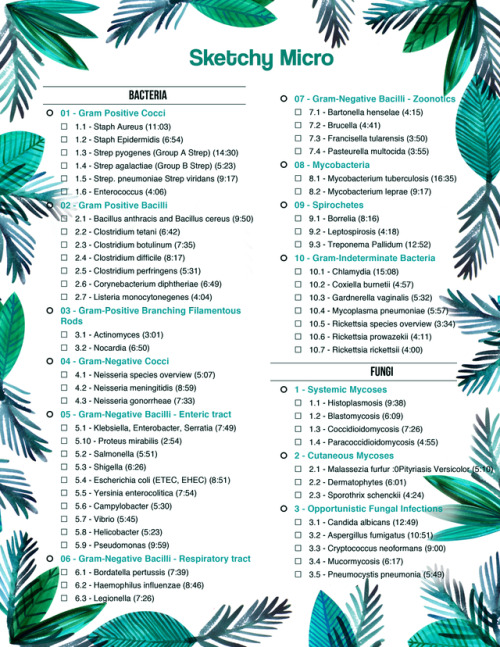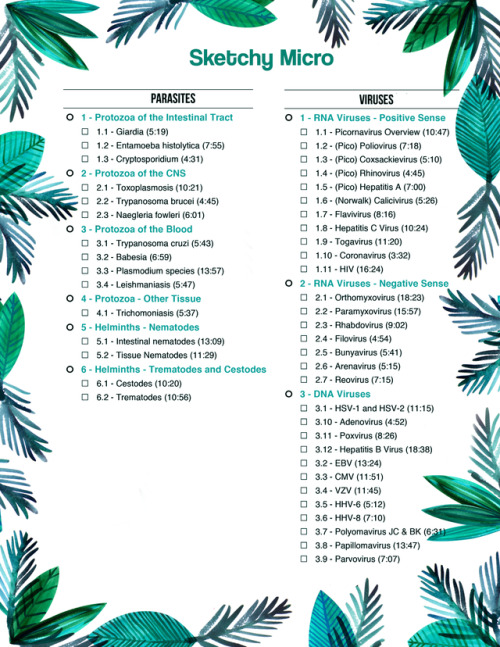Archaea
Archaea
Archaeans are single-celled and join bacteria to make up the Prokaryotes. The Archaea classification is a very recent discovery, due to the similarities in appearance and behaviour to bacteria they weren’t separated until the late 1970′s. They mostly live in extreme environments and can be sub grouped:
Methanogens - produce methane gas as a waste product of their “digestion,” or process of making energy.
Halophiles - live in salty environments.
Thermophiles - live at extremely hot temperatures.
Psychrophiles — those that live at unusually cold temperatures.
Like bacteria, archaea lack a true nucleus. Both bacteria and archaea usually have one DNA molecule suspended in the cell’s cytoplasm contained within a cell membrane. Most, but not all, have a tough, rigid outer cell wall.

use a variety of substances for energy, including hydrogen gas, carbon dioxide and sulfur.
many archaea thrive in conditions mimicking those found more than 3.5 billion years ago. [eg oceans that regularly reached boiling point — an extreme condition not unlike the hydrothermal vents and sulfuric waters where archaea are found today]
More Posts from T-b-a-blr-blog and Others





Hi, everyone!! I’ve had a studyblr for about a week now and have already met so many kind, supportive people. I couldn’t be more thankful. That said, I really wanted to give back to such an amazing community! So here’s my first printable for you!
It includes:
a 5AM-10PM schedule (for my early hustlers)
‘Top 3 Priorities’ + ‘Can Wait’ categories
a ‘To-Do’ list
Daily Goals, Notes, Doodles
a water tracker (stay hydrated, friends!)
10 Good Things (reflect back on your day and jot down the little things that made you happy even if your day wasn’t the greatest)
They’re available for download in PDF and PNG formats + in pink, blue, yellow, and white! I’ve also made a grid and grid-less version!
Grid
Blue: pdf / png Pink: pdf / png White: pdf / png Yellow: pdf / png
No Grid
Blue: pdf / png Pink: pdf / png White: pdf / png Yellow: pdf / png
And here’s a link to the entire folder on my DropBox!
Please tag me with #arystudies or mention me if you use these!! I’d love to see them in action. :’) I’m also really curious to see what you all think of them, so please let me know!!
Be sure to check out my monthly calendars too!
Happy studying!
Cysteine Growth Requirements
MICROBIOLOGY MNEMONIC
BoyFriend Lost Penis
B rucella
F rancisella
L egionella
P asteurella
or….
The four sisters “Ella” worship in the “cystein” chapel
Brucella
Francisella
Legionella
Pasteurella


Sketchy Micro To Do List:
• 01 - Gram Positive Cocci o 1.1 - Staph Aureus (11:03) o 1.2 - Staph Epidermidis (6:54) o 1.3 - Strep pyogenes (Group A Strep) (14:30) o 1.4 - Strep agalactiae (Group B Strep) (5:23) o 1.5 - Strep. pneumoniae Strep viridans (9:17) o 1.6 - Enterococcus (4:06) • 02 - Gram Positive Bacilli o 2.1 - Bacillus anthracis and Bacillus cereus (9:50) o 2.2 - Clostridium tetani (6:42) o 2.3 - Clostridium botulinum (7:35) o 2.4 - Clostridium difficile (8:17) o 2.5 - Clostridium perfringens (5:31) o 2.6 - Corynebacterium diphtheriae (6:49) o 2.7 - Listeria monocytonegenes (4:04) • 03 - Gram-Positive Branching Filamentous Rods o 3.1 - Actinomyces (3:01) o 3.2 - Nocardia (6:50) • 04 - Gram-Negative Cocci o 4.1 - Neisseria species overview (5:07) o 4.2 - Neisseria meningitidis (8:59) o 4.3 - Neisseria gonorrheae (7:33) • 05 - Gram-Negative Bacilli - Enteric tract o 5.1 - Klebsiella, Enterobacter, Serratia (7:49) o 5.10 - Proteus mirabilis (2:54) o 5.2 - Salmonella (5:51) o 5.3 - Shigella (6:26) o 5.4 - Escherichia coli (ETEC, EHEC) (8:51) o 5.5 - Yersinia enterocolitica (7:54) o 5.6 - Campylobacter (5:30) o 5.7 - Vibrio (5:45) o 5.8 - Helicobacter (5:23) o 5.9 - Pseudomonas (9:59) • 06 - Gram-Negative Bacilli - Respiratory tract o 6.1 - Bordatella pertussis (7:39) o 6.2 - Haemophilus influenzae (8:46) o 6.3 - Legionella (7:26)
• 07 - Gram-Negative Bacilli - Zoonotics o 7.1 - Bartonella henselae (4:15) o 7.2 - Brucella (4:41) o 7.3 - Francisella tularensis (3:50) o 7.4 - Pasteurella multocida (3:55) • 08 - Mycobacteria o 8.1 - Mycobacterium tuberculosis (16:35) o 8.2 - Mycobacterium leprae (9:17) • 09 - Spirochetes o 9.1 - Borrelia (8:16) o 9.2 - Leptospirosis (4:18) o 9.3 - Treponema Pallidum (12:52) • 10 - Gram-Indeterminate Bacteria o 10.1 - Chlamydia (15:08) o 10.2 - Coxiella burnetii (4:57) o 10.3 - Gardnerella vaginalis (5:32) o 10.4 - Mycoplasma pneumoniae (5:57) o 10.5 - Rickettsia species overview (3:34) o 10.6 - Rickettsia prowazekii (4:11) o 10.7 - Rickettsia rickettsii (4:00) • Fungi • 1 - Systemic Mycoses o 1.1 - Histoplasmosis (9:38) o 1.2 - Blastomycosis (6:09) o 1.3 - Coccidioidomycosis (7:26) o 1.4 - Paracoccidioidomycosis (4:55) • 2 - Cutaneous Mycoses o 2.1 - Malassezia furfur :0Pityriasis Versicolor (5:10) o 2.2 - Dermatophytes (6:01) o 2.3 - Sporothrix schenckii (4:24) • 3 - Opportunistic Fungal Infections o 3.1 - Candida albicans (12:49) o 3.2 - Aspergillus fumigatus (10:51) o 3.3 - Cryptococcus neoformans (9:00) o 3.4 - Mucormycosis (6:17) o 3.5 - Pneumocystis pneumonia (5:49)
• Parasites • 1 - Protozoa of the Intestinal Tract o 1.1 - Giardia (5:19) o 1.2 - Entamoeba histolytica (7:55) o 1.3 - Cryptosporidium (4:31) • 2 - Protozoa of the CNS o 2.1 - Toxoplasmosis (10:21) o 2.2 - Trypanosoma brucei (4:45) o 2.3 - Naegleria fowleri (6:01) • 3 - Protozoa of the Blood o 3.1 - Trypanosoma cruzi (5:43) o 3.2 - Babesia (6:59) o 3.3 - Plasmodium species (13:57) o 3.4 - Leishmaniasis (5:47) • 4 - Protozoa - Other Tissue o 4.1 - Trichomoniasis (5:37) • 5 - Helminths - Nematodes o 5.1 - Intestinal nematodes (13:09) o 5.2 - Tissue Nematodes (11:29) • 6 - Helminths - Trematodes and Cestodes o 6.1 - Cestodes (10:20) o 6.2 - Trematodes (10:56)
• Viruses • 1 - RNA Viruses - Positive Sense o 1.1 - Picornavirus Overview (10:47) o 1.2 - (Pico) Poliovirus (7:18) o 1.3 - (Pico) Coxsackievirus (5:10) o 1.4 - (Pico) Rhinovirus (4:45) o 1.5 - (Pico) Hepatitis A (7:00) o 1.6 - (Norwalk) Calicivirus (5:26) o 1.7 - Flavivirus (8:16) o 1.8 - Hepatitis C Virus (10:24) o 1.9 - Togavirus (11:20) o 1.10 - Coronavirus (3:32) o 1.11 - HIV (16:24) • 2 - RNA Viruses - Negative Sense o 2.1 - Orthomyxovirus (18:23) o 2.2 - Paramyxovirus (15:57) o 2.3 - Rhabdovirus (9:02) o 2.4 - Filovirus (4:54) o 2.5 - Bunyavirus (5:41) o 2.6 - Arenavirus (5:15) o 2.7 - Reovirus (7:15) • 3 - DNA Viruses o 3.1 - HSV-1 and HSV-2 (11:15) o 3.10 - Adenovirus (4:52) o 3.11 - Poxvirus (8:26) o 3.12 - Hepatitis B Virus (18:38) o 3.2 - EBV (13:24) o 3.3 - CMV (11:51) o 3.4 - VZV (11:45) o 3.5 - HHV-6 (5:12) o 3.6 - HHV-8 (7:10) o 3.7 - Polyomavirus JC & BK (6:31) o 3.8 - Papillomavirus (13:47) o 3.9 - Parvovirus (7:07)
Antimicrobial Agents - Inhibition of DNA and Protein Synthesis
Bacterial chromosome replication

DNA replication

Bacterial Topoisomerases
maintain DNA in appropriate state of supercoiling
cut and reseal DNA
DNA gyrase (topoisomerase II) introduces negative supercoils
Topoisomerase IV decatenates circular chromosomes
these are the targets of the quinolone antibacterial agents
Quinolones
bind to bacterial DNA gyrase and topoisomerase IV after DNA strand breakage
prevent resealing of DNA
disrupt DNA replication and repair
bactericidal (kill bacteria)
Fluoroquinolone is particularly useful against
Gram +ves: Staphylococcus aureus, streptococci
Gram -ves: Enterobacteriacea; Pseudomonas aeruginosa
Anaerobes: e.g. Bacteroides fragilis
many applications e.g. UTIs, prostatitis, gastroenteritis, STIs
Adverse effects
Relatively well tolerated
GI upset in ~ 5% of patients
allergic reactions (rash, photosensitivity) in 1 - 2% of patients

Inhibition of Bacterial Protein Synthesis
Macrolides
in 1952: Erythromycin was isolated as the first macrolide (Streptomyces erythreus)
Newer macrolides: clarithromycin, azithromycin
Structurally they consist of a lactone ring (14- to 16-membered) + two attached deoxy sugars
Mode of action
bind reversibly to bacterial 50S ribosomal subunit
causes growing peptide chain to dissociate from ribosome → inhibiting protein synthesis
bacteriostatic (stops reproduction)

Macrolides’ spectrum of activity
good antistaphylococcal and antistreptococcal activity
treatment of respiratory & soft tissue infections and sensitive intracellular pathogens • e.g. Chlamydia, Legionella
Adverse effects
Generally well tolerated
nausea
vomiting
diarrhoea
rash
Aminoglycosides
large family of antibiotics produced by various species of Streptomyces (“mycin”) and Micromonospora (“micin”)
include: streptomycin, neomycin, kanamycin, gentamicins, tobramycin
Structure = linked ring system composed of aminosugars and an aminosubstituted cyclic polyalcohol
Mode of action of aminoglycosides
Bind irreversibly to 30S ribosomal subunit
disrupt elongation of nascent peptide chain
translational inaccuracy → defective proteins
bactericidal

Spectrum of activity
broad spectrum; mainly aerobic G-ve bacilli (e.g. P. aeruginosa)
used to treat serious nosocomial infections (hospital acquired infections)
First TB antibiotic
Used for cystic fibrosis
Adverse effects
all aminoglycosides have low Therapeutic Index (only a small amount needed to become toxic)
renal damage, ototoxicity, loss of balance, nausea

Virus Classification

Some general resources:
Chemistry Glossary
Chemistry Exam Survival Guide
Toolbox – interactive graphing, tables, and calculators
Make virtual chemistry models
Interactive periodic table
Another site for making virtual chemistry models
Virtual labs – covers stoichiometry, thermochemistry, eq1uilibrium, acid base chemistry, solubility, oxidation/reduction and electrochemistry, analytical chemistry/lab techniques
Concept tests
Chemistry Science Fair Project Ideas
OChem Reaction Bank
Interactive chem simulations
Chemical calculations
The Chem Blog
Molecule of the day
Free chemistry drawing software
Laboratory Safety - Laboratory safety for the chemistry classroom
Periodic Table of Videos - Brady Haran
On this day in chemistry… - a history of chemistry
The faces of chemistry
Experimentation hub - explore and enjoy our experiments to increase engagement in scientific investigation, develop new skills and enhance your knowledge.
Understanding journals - including reading articles, referencing, and example articles.
Resources for specific topics:
Stochiometry – the mole, molarity and density, reaction stoichiometry and limiting reagents, empirical formula and mixtures, gravimetric analysis
Themochemistry – energy and enthalpy, entropy
Kinetics – phenomenological and mechanistic kinetics
Equilibrium – LeChatlier’s principle, progress of reaction, equilibrium calculations, common ion effect
Acid base chemistry – strong acid and bases, weak acids and bases, buffer solutions, acid/base titrations
Solubility – solubility product, solubility and PH, common ion effect
Oxidation/Reduction and Electrochemistry – standard reduction potentials, galvanic cells
Analytical chemistry/ Lab techniques – reaction stoichiometry and limiting reagents, acid/base titrations, redox titrations, gravimetric analysis, UC/Vis spectroscopy
Physical chemistry – quantum mechanics, spectroscopy
Properties of solutions – intermolecular forces, colligative properties
Textbooks:
Chemistry Virtual Textbooks, Stephen Lower
Organic Chemistry, Tim Soderberg
Organic Chemistry I, George Mhehe
Environmental Chemistry, Dejene Tessema
Virtual Organic Chemistry
Industrial Chemistry, Helen Njenga
Inorganic Chemistry, Chrispin Kowenje
Physical Chemistry I, Onesmus Munyaki
General Chemistry, Principles, Patterns and Applications
Chemistry Books - a variety of chemistry textbooks
Chemistry Tutorials/Guides:
Atoms, Molecules, and Ions
Chemical reactions and stoichiometry
Electronic structure of atoms
Periodic table
Chemical bonds
Gases and kinetic molecular theory
State of matter and intermolecular forces
Chemical equilibrium
Acids and bases
Acid base equilibria and solubility equilibria
Thermodynamics
Redox reactions and electrochemistry
Kinetics
Nuclear chemistry
Organic Chemistry Tutorials/Guidelines:
Structure and bonding
Dot structures
Hybridization
Bond-line structures
Electronegativity
Resonance and acid base chemistry
Counting electrons
Resonance structures
Organic acid-base chemistry
Alkanes, cycloalkanes and functional groups
Naming alkanes
Naming alkanes, cycloalkanes, and bicyclic compounds
Conformations of alkanes
Conformations of cycloalkanes
Functional groups
Stereochemistry
Chirality
Enantiomers
Stereoisomeric relationships
Subsituation and elimination reactions
Free radical reaction
Sn1 vs Sn2
Nucleophilicity and basicity
Elimination reactions
Sn1/Sn2/E1/E2
Sn1 and Sn2
Alkenes and alkynes
Naming alkenes
Alkene reactions
Alkene nomenclature
Alkene reactions
Naming and preparing alkynes
Alkyne reactions
Alcohols, ethers, epoxides, sulphides
Alcohol nomenclature and properties
Synthesis of alcohols
Reactions of alcohols
Nomenclature and properties of ethers
Synthesis and cleavage of ethers
Nomenclature and preparation of epoxides
Conjugation, Diels-Alder, and MO theory
Addition reactions of conjugated dienes
Diels-Alder reaction
Molecular orbital theory
Aromatic compounds
Naming benzene derivatives
Reactions of benzene
Aromatic stability
Electrophilic aromatic substitution
Directing effects
Other reactions and synthesis
Aldehydes and ketones
Introduction to aldehydes and ketones
Reactions of aldehydes and ketones
Carboxylic acids and derivatives
Naming carboxylic acids
Formation of carboxylic acid derivatives
Nomenclature and reactions of carboxylic acids
Nomenclature and reactions of carboxylic acid derivatives
Alpha carbon chemistry
Formation of enolate anions
Aldol condensations
Amines
Naming amines
Spectroscopy
Infrared Spectroscopy
UV/Vis Spectroscopy
proton NMR
Careers:
A future in Chemistry
What can I do with my chemistry degree?
Chemistry Careers - American Chemical Society
What to do with a degree in chemistry - The Guardian



Medically Important Bacteria: Clasification


Different anatomy notes form this semester Supplies used (not all at once, I mix and match): Faber-Castell Coloured Pencils (48 Pack) - https://amzn.to/2Kd1mUy Staedtler Triplus Fineliners - http://amzn.to/2pghonI Stabilo Point 88 Fineliner - https://amzn.to/2qU8fC9 Sharpie Pens - https://amzn.to/2HTRmP2 Uni Pin 0.1 Fineliner - https://amzn.to/2HmXp1z Crayola Supertips - https://amzn.to/2HVW1jr Bic Ballpoint Pen - https://amzn.to/2HmCjk0 Stabilo Swing Cool Highlighters - https://amzn.to/2HKxPTu
Most Common facts about infectious diseases
1. Most common cause of septic arthritis in a person less than 40 years old = Gonococcus 2. Most common cause of osteomyelitis in general population = S. aureus 3. Most common cause of osteomyelitis in Sickle Cell patients = Salmonella 4. Most common cause of osteomyelitis due to nail-puncture wounds = Pseudomonas (V.Imp!) 5. Most common parasitic infection of the brain = Neurocysticercosis 6. Most common cause of Encephalitis in USA = Herpes Simplex Virus (HSV) 7. Most common cause of dysentry in the USA = C. jejuni (undercooked poultry) 8. Second most cause of dysentry in the USA = Shigella (daycare centers) 9. Most common cause of pneumonia in nursing home residents = S. pneumoniae 10. Most common cause of malignant otitis externa = P. aeruginosa 11. Most common risk for contracting HIV in USA= Intravenous Drug Use 12. Most common presenting Manifestation of AIDs = P. carinii pneumonia 13. Most common cause of Menigitis in adolescents = N. Gonorhhaea 14. Most common cause of Meningitis in the USA = Streptococcus pneumoniae 15. Most common Neurological Manifestation of Lyme Disease = Facial Nerve palsy! 16. Most common Cardiac manifestation of Lyme Disease = AV Heart Block 17. Most Common viral STD in the USA = HPV ! 18. Most Common Complication of Mumps in Pre-pubertal Children = Encephalitis 19. Most Common Complication of Mumps in Pubertal and Post-Pubertal Adults (and Males) = Orchitis
-
 erin-spradlin-blog reblogged this · 6 years ago
erin-spradlin-blog reblogged this · 6 years ago -
 joyaless liked this · 6 years ago
joyaless liked this · 6 years ago -
 t-b-a-blr-blog reblogged this · 6 years ago
t-b-a-blr-blog reblogged this · 6 years ago -
 t-b-a-blr-blog liked this · 6 years ago
t-b-a-blr-blog liked this · 6 years ago -
 i-do-science-sometimes-blog reblogged this · 7 years ago
i-do-science-sometimes-blog reblogged this · 7 years ago -
 i-do-science-sometimes-blog liked this · 7 years ago
i-do-science-sometimes-blog liked this · 7 years ago -
 myexamprep reblogged this · 7 years ago
myexamprep reblogged this · 7 years ago -
 katyest liked this · 7 years ago
katyest liked this · 7 years ago -
 triskyson liked this · 8 years ago
triskyson liked this · 8 years ago -
 murphree6795-blog liked this · 8 years ago
murphree6795-blog liked this · 8 years ago -
 medmeow reblogged this · 8 years ago
medmeow reblogged this · 8 years ago -
 kamilicni-caj reblogged this · 8 years ago
kamilicni-caj reblogged this · 8 years ago -
 annoyingcoloryouth-blog liked this · 8 years ago
annoyingcoloryouth-blog liked this · 8 years ago -
 lauchou22-blog liked this · 8 years ago
lauchou22-blog liked this · 8 years ago -
 aurea-corde reblogged this · 9 years ago
aurea-corde reblogged this · 9 years ago -
 s-t-i-l-l-e-s liked this · 9 years ago
s-t-i-l-l-e-s liked this · 9 years ago -
 dinglhopper reblogged this · 9 years ago
dinglhopper reblogged this · 9 years ago -
 nalutilus-blog liked this · 9 years ago
nalutilus-blog liked this · 9 years ago -
 mazarinedrake reblogged this · 9 years ago
mazarinedrake reblogged this · 9 years ago -
 renaissanceman73 liked this · 9 years ago
renaissanceman73 liked this · 9 years ago -
 gofollowthestars liked this · 9 years ago
gofollowthestars liked this · 9 years ago -
 shunchih liked this · 9 years ago
shunchih liked this · 9 years ago -
 thejewishjedi liked this · 9 years ago
thejewishjedi liked this · 9 years ago -
 v-k-rm liked this · 9 years ago
v-k-rm liked this · 9 years ago -
 foxjevilwild liked this · 9 years ago
foxjevilwild liked this · 9 years ago -
 nicope-k liked this · 9 years ago
nicope-k liked this · 9 years ago -
 itsybitsysprinkles liked this · 9 years ago
itsybitsysprinkles liked this · 9 years ago -
 tinsnip reblogged this · 9 years ago
tinsnip reblogged this · 9 years ago -
 tinsnip liked this · 9 years ago
tinsnip liked this · 9 years ago -
 accio-study reblogged this · 9 years ago
accio-study reblogged this · 9 years ago -
 heavybassslut reblogged this · 9 years ago
heavybassslut reblogged this · 9 years ago -
 heavybassslut liked this · 9 years ago
heavybassslut liked this · 9 years ago -
 scleil-blog reblogged this · 9 years ago
scleil-blog reblogged this · 9 years ago -
 cornflakestew reblogged this · 9 years ago
cornflakestew reblogged this · 9 years ago -
 burntsugaar liked this · 9 years ago
burntsugaar liked this · 9 years ago -
 tinylifeform reblogged this · 9 years ago
tinylifeform reblogged this · 9 years ago -
 tinylifeform liked this · 9 years ago
tinylifeform liked this · 9 years ago -
 biomedicool reblogged this · 9 years ago
biomedicool reblogged this · 9 years ago